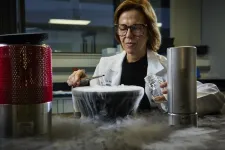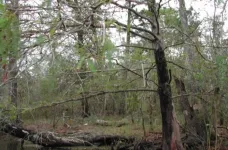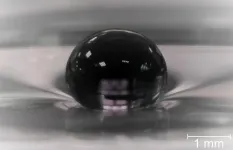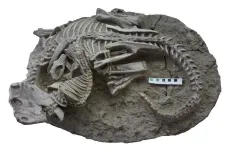Colleen McDonald, Sr. Consultant - Earned Media
414.801.3146 | cmcdonald@mcw.edu
Medical College of Wisconsin scientist and international team awarded $13 million NIH program project grant to study calcifications in diseases of aging Dr. Francesca Marassi and collaborators garner $13 million NIH grant to study misplaced calcified deposits that are a misunderstood factor in common diseases of aging Milwaukee, Wis., July 18, 2023 – Francesca Marassi, PhD, professor and chair of biophysics at the Medical College of Wisconsin (MCW), has been awarded a five-year, $13 million program project grant (PPG) by the National Institutes of Health (NIH) to study misplaced calcification in the eyes and brains of patients suffering from age-related macular degeneration (AMD) and Alzheimer’s disease (AD).
AMD affects nearly 20 million adults in the U.S. and is the leading cause of central vision loss and legal blindness. More than 6 million people in the U.S. suffer from AD, the top cause of dementia across the globe. Age is a prominent risk factor for these diseases. How AMD and AD progress over time is not well understood, and research is needed to drive the development of effective pharmaceutical treatments.
Both diseases are associated with the progressive accumulation of pebble-like deposits under the retina and in the brain. These deposits are known to contain cholesterol, fats (lipids), proteins, and a mineralized form of calcium phosphate called hydroxyapatite – the same material that forms healthy teeth and bone. Scientists do not yet know what causes these misplaced mineral deposits to form in the eye and the brain. Healthy biological processes for calcification are intended to grow and repair bones and teeth, not litter the retina or brain with harmful junk. Understanding how and why these wayward biomineral deposits form may provide clues to better understand AMD and AD, as well as the development of new ways to diagnose and treat these diseases.
With the eye and brain intimately connected as integral parts of the central nervous system, Dr. Marassi and her international PPG team of scientists will explore the characteristics of misplaced calcifications in both organs, as well as their roles in AMD and AD. A central goal is to examine and image calcifications at multiple levels, from the atom-by-atom structures to their aggregated morphologies, and their accumulation in cells and animals.
“I’m really excited about exploring these disease pathologies over the full range of scales from the atomic to the animal. This type of structural information is essential for moving forward into diagnostic and drug development,” Marassi said.
The PPG team includes Galia Debelouchina, PhD, University of California San Diego; Jose Luis Millan, PhD, Sanford Burnham Prebys Medical Discovery Institute (La Jolla, Calif.); Richard Thompson, PhD, University of Maryland School of Medicine (Baltimore); and Imre Lengyel, PhD, Queen’s University Belfast. Led by Dr. Marassi, they’ve designed four PPG projects to accomplish their scientific goals.
“Our collaborative program is truly synergistic, with each team member bringing unique expertise and technology to the partnership,” Marassi said. “While the principal goal is to do excellent basic science that contributes fundamental knowledge about misplaced calcification in disease, we believe there’s tremendous potential for these advances to provide a foundation for new diagnostic techniques and treatments in the future, as best expressed in the MCW motto knowledge changing life.”
The first project, led by Drs. Marassi and Debelouchina, will focus on the molecular structure and function of the misplaced calcified deposits and their components. Their research teams will use sophisticated biophysical techniques to reveal the makeup of these deposits and how they form by examining the interactions between the protein, cholesterol, fat, and mineral components of the pebble-like deposits.
Dr. Thompson will head the second project to develop and test new methods for tagging biominerals within the deposits with small molecules that cause the minerals to emit specific colors or wavelengths of light for the scientists to detect on images. These fluorescent and luminescent sensors will serve as research tools for the other projects and may eventually lead to new tools for diagnosing and monitoring AMD and AD.
The third project, spearheaded by Dr. Lengyel, aims to develop new cellular models of calcifications that mimic the deposits found in animals and humans. His team will study how levels of certain proteins, genetic predispositions, and other factors influence deposit formation.
Dr. Millan directs the fourth project to study how cells and tissues maintain their balance of phosphorus levels, which is essential to healthy bone development. In human adults, approximately 90 percent of the body’s total phosphorus is contained in bone as hydroxyapatite crystals, which also are part of the errant calcified deposits that form in AMD and AD. Dr. Millan’s team will study mice that produce an excessive amount of an enzyme to determine how its control of phosphorus levels contributes to the formation of calcified deposits in the eye.
The PPG grant is funded by the National Institute on Aging and titled, “Molecular mechanisms of calcification: roles and opportunities in diseases of aging.” In addition to the four projects, the grant will fund a protein and chemical biology core that will develop and provide biologic reagents for the PPG experiments, and an administrative core that will facilitate interactions among the PPG team laboratories.
NOTE: Dr. Marassi is available for interviews about her research and this newly awarded grant. Please contact Colleen McDonald at cmcdonald@mcw.edu to schedule.
# # #
About the Medical College of Wisconsin
With a history dating back to 1893, The Medical College of Wisconsin is dedicated to leadership and excellence in education, patient care, research, and community engagement. More than 1,500 students are enrolled in MCW’s medical school and graduate school programs in Milwaukee, Green Bay, and Central Wisconsin. MCW’s School of Pharmacy opened in 2017. A major national research center, MCW is the largest research institution in the Milwaukee metro area and second largest in Wisconsin. In the last 10 years, faculty received more than $1.5 billion in external support for research, teaching, training, and related purposes. This total includes highly competitive research and training awards from the National Institutes of Health (NIH). Annually, MCW faculty direct or collaborate on more than 3,100 research studies, including clinical trials. Additionally, more than 1,650 physicians provide care in virtually every specialty of medicine for more than 2.8 million patients annually.
END



